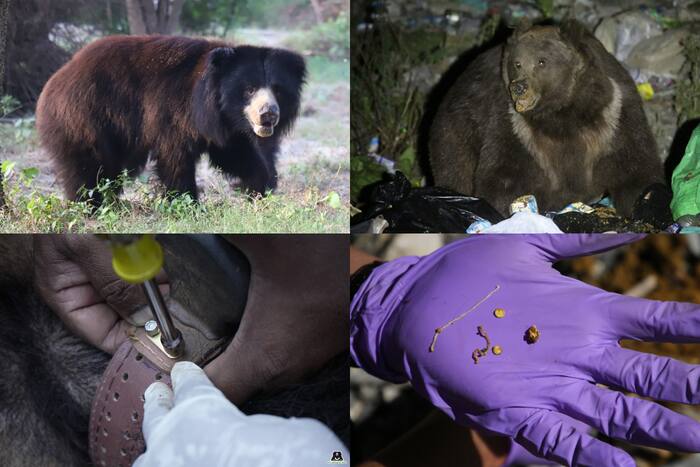Out of the four bear species found in the country, Wildlife SOS works toward the conservation of three – sloth bears, Himalayan brown bears and Asiatic black bears.

World Bear Day: As the entire world marks World Bear Day on March 23 every year, it presents the perfect opportunity to shine the light on these charismatic species found in India. Out of the four bear species found in the country, Wildlife SOS works toward the conservation of three – sloth bears, Himalayan brown bears and Asiatic black bears.
Having resolved the 400-year-old ‘dancing’ bear tradition by rescuing and rehabilitating over 620 sloth bears from the streets of India, Wildlife SOS is now focusing on conservation of this species in the wild. The NGO, along with the forest department, has launched a comprehensive Sloth Bear Radio Collaring project in the state of Karnataka, aimed at understanding sloth bear movements, population status and distribution within the state. Studying these factors by employing GPS collars will help identify specific factors contributing to human‐sloth bear conflict. The NGO will also assess the nature and frequency of human-bear conflicts, and eventually recommend mitigation measures.
Dr. Arun A. Sha, Director- Research & Veterinary Operations, Wildlife SOS said, “We plan to collar and track several sloth bears using GPS technology. The collaring process involves laying out barrel traps, tranquilising the bears with the assistance of the forest department, and attaching the GPS collars. The animals are then observed for a few hours before being safely released back into the wild at their place of tranquilisation.”
Additionally, the Wildlife SOS team works in northern India’s Kashmir to track and radio collar brown bears. Following a preliminary field study in 2021, the organisation found the brown bears venturing into lower altitudes to the garbage dumps and human settlements for food, resulting in the trash habituation of bears and human-brown bear conflicts.
This resulted in conducting a radio-collaring project of brown bears in the Thajwas – Baltal Wildlife Sanctuary of Sonmarg, in conjunction with the J&K Wildlife Protection Department. Some of the primary objectives of the study is to understand the bears’ habitat utilisation, movement pattern, activity pattern and hibernation period, to name a few. Wildlife SOS has also worked on conflict mitigation measures and conducted research on human-Asiatic black bear conflict in the Kashmir Valley. Expanding its conservation efforts, the NGO has rescued black bears from aggressive conflict situations, and placed them under long-term care.
Kartick Satyanarayan, Co-founder and CEO, Wildlife SOS said, “Our preliminary study found that 75% of the diet of the bears who frequented human-made garbage dumps included plastic, chocolates and organic food waste. The improper disposal of waste is a major factor that attracts bears close to human settlements, thereby increasing the risk of direct conflict. That’s why this study is crucial for us to come up with scientific solutions to mitigate conflict.”
Geeta Seshamani, Co-founder and Secretary, Wildlife SOS said, “Working on three of the four types of bears found in India shows our commitment toward the conservation of these species. Bears still face issues such as loss of their home, encroachment of their habitat, retaliation due to lack of behaviour awareness, to name a few. So our work does not stop here and we will continue strive for a better world where co-existence is possible.”



















